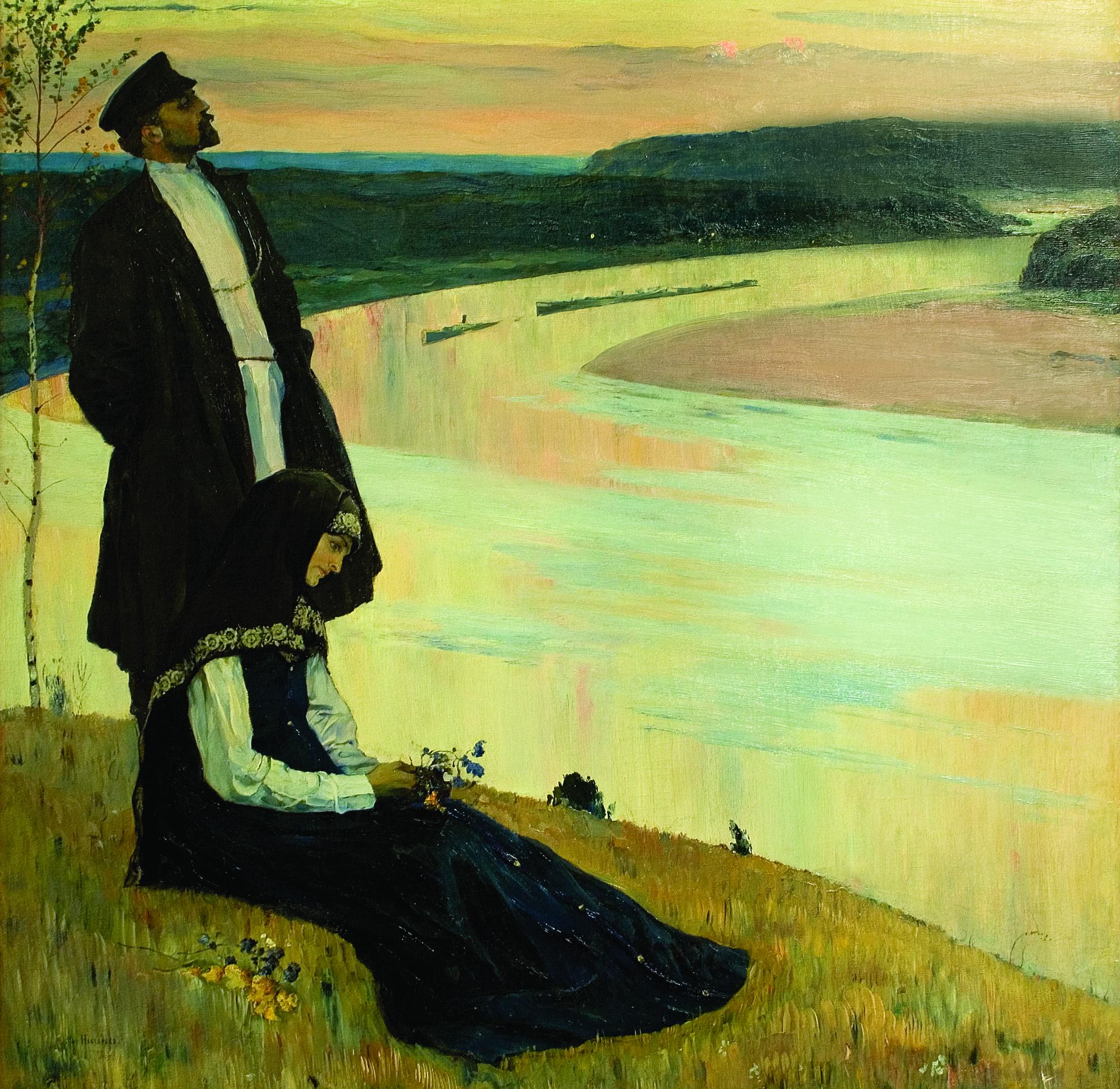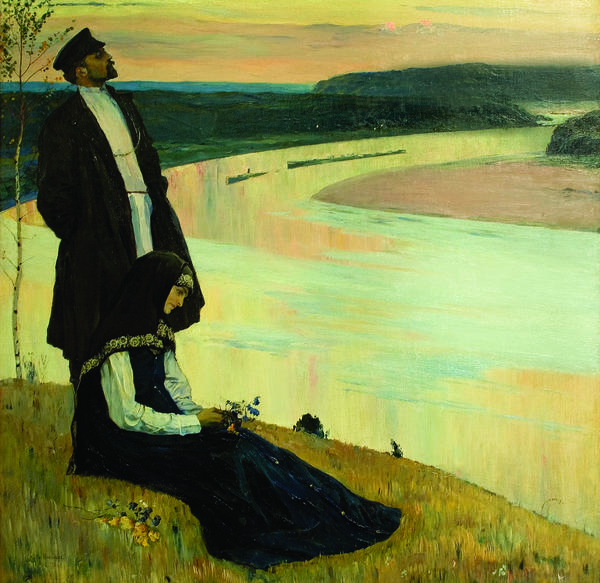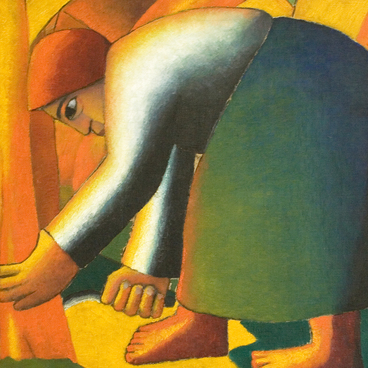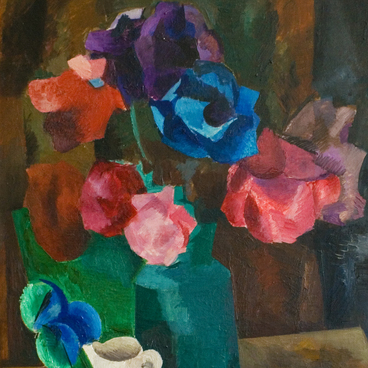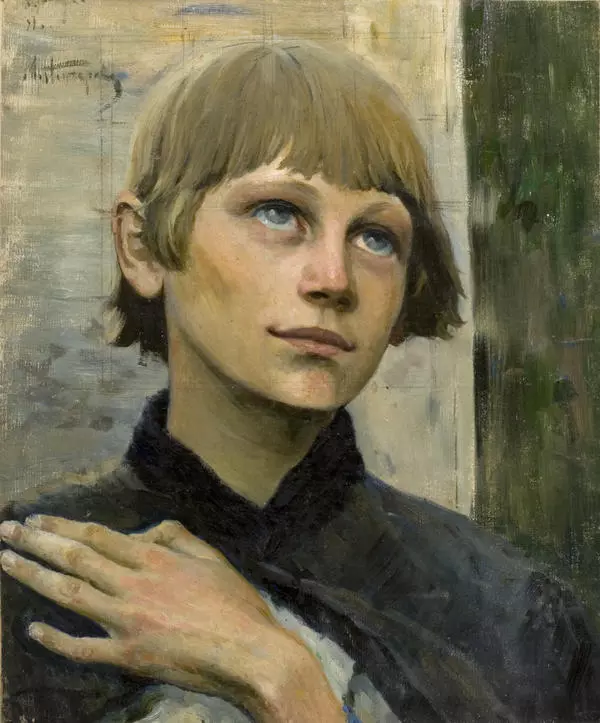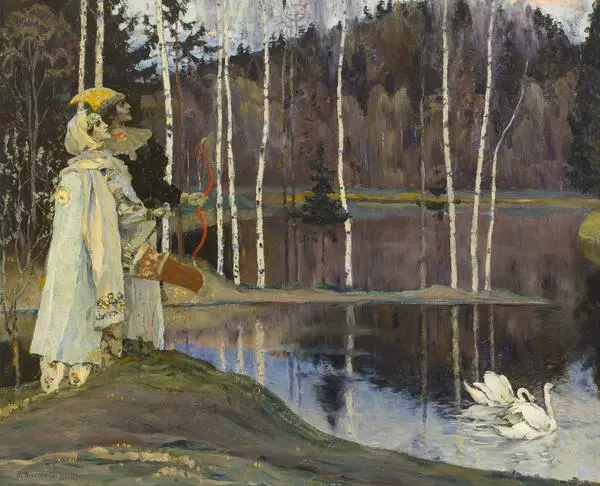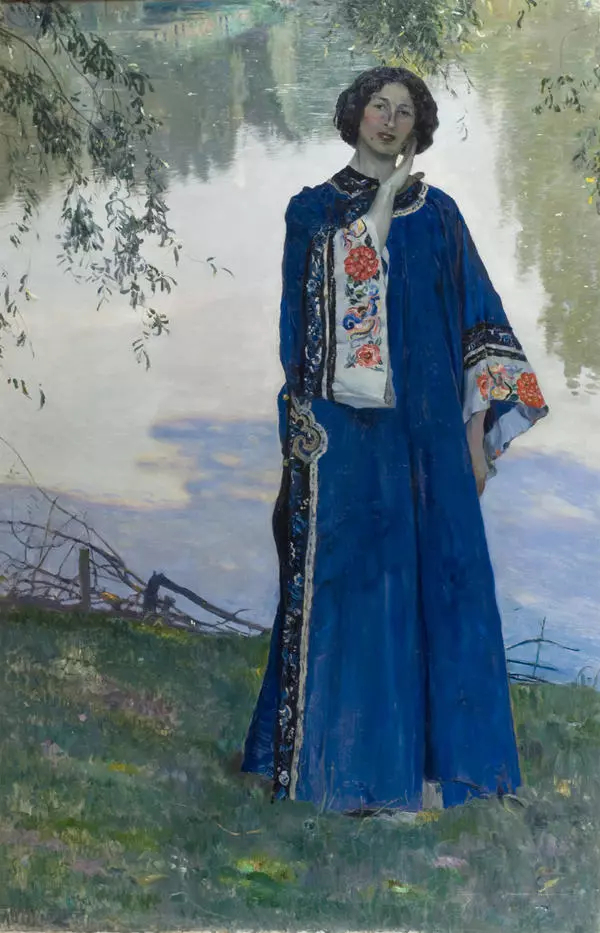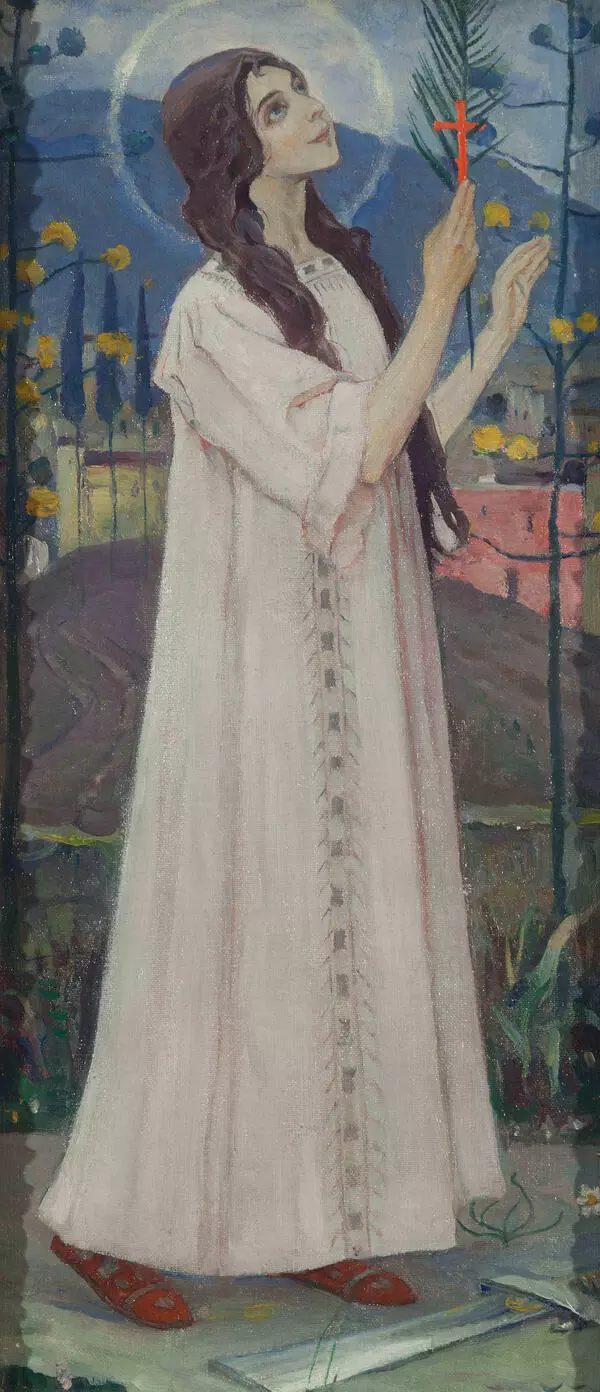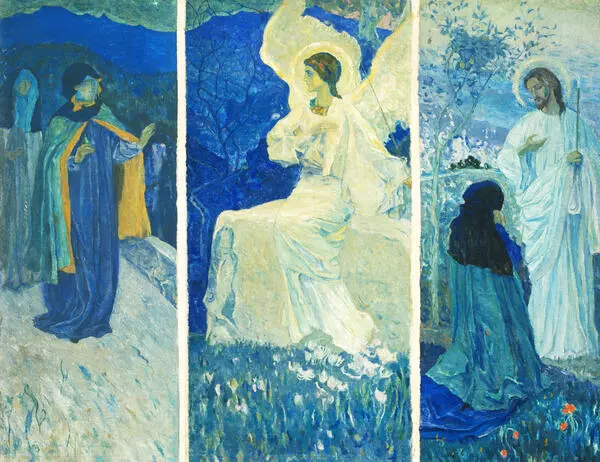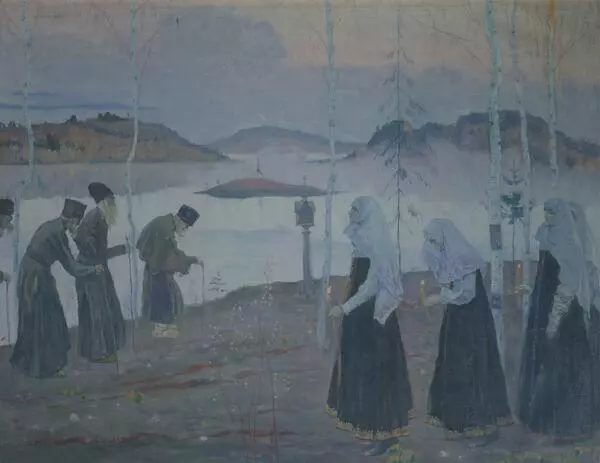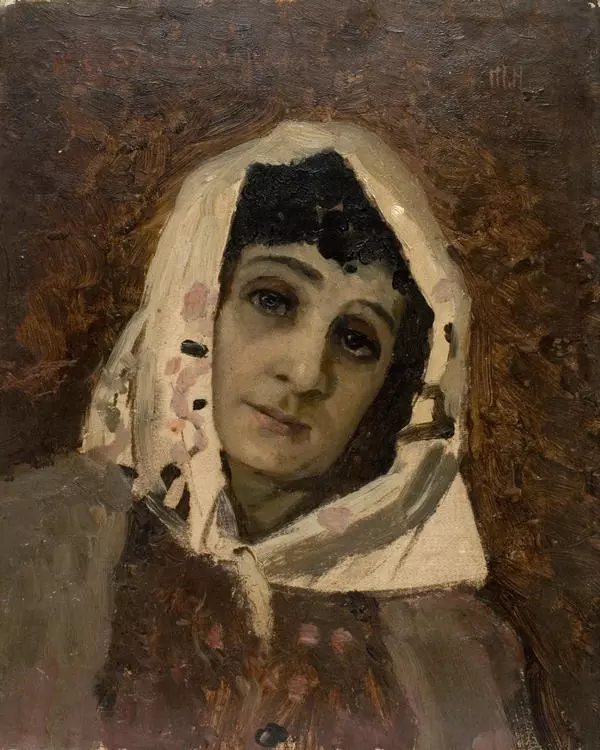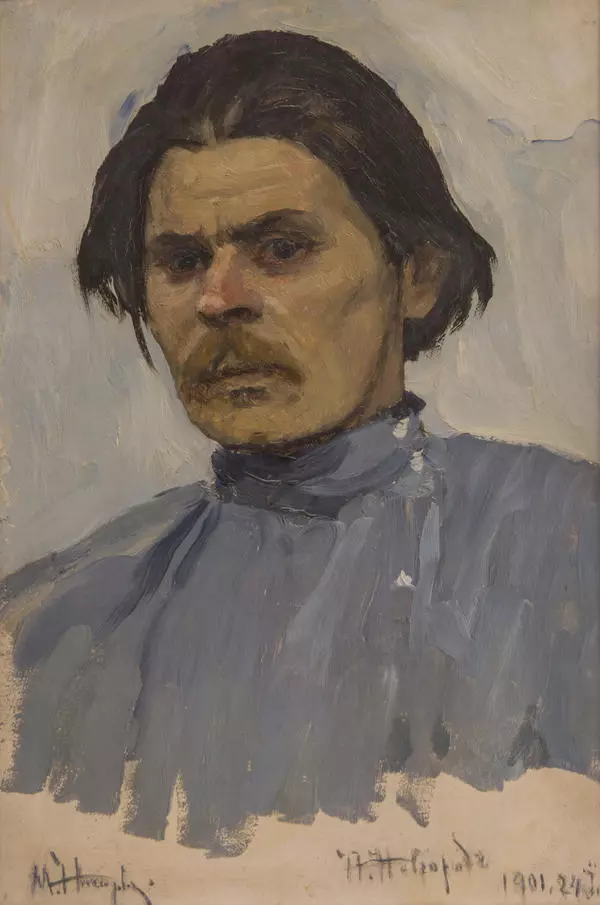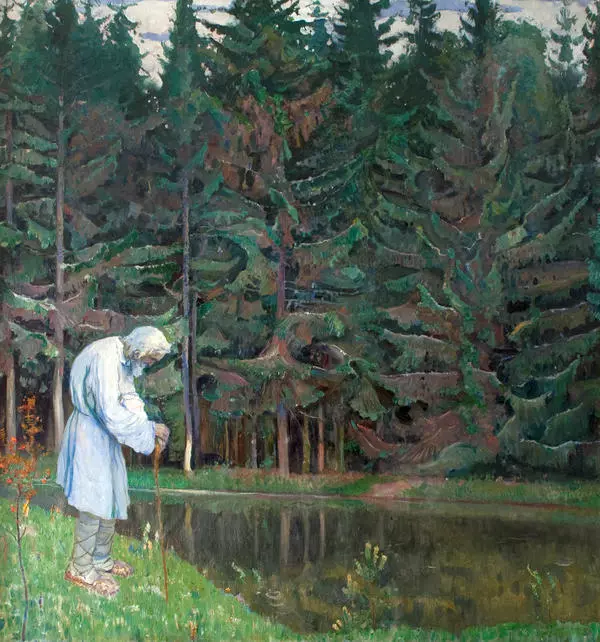Mikhail Nesterov’s painting Beyond the Volga River created in 1905 was part of the cycle that the artist conceived as “a painted novel, a novel in paintings”. Nesterov painted this series under the impression from the works of the writer and publicist Pavel Melnikov-Pechersky In the Woods and In the Mountains that gave a truthful and detailed description of the life of old believers - merchants.
Nesterov conceived Beyond the Volga River as a philosophic story, a reflection on human life and the place of nature in establishing spiritual world order. The characters embody two love stories that did not become one, two opposing views on changes in the country, on the new world in the new century.
A young merchant with both feet solidly on the ground and a proudly raised head is looking at the Volga directly and decisively. His image embodies a practical business-like approach to life and the world around him. He resembles Lopakhin from Chekhov’s Cherry Orchard or Kudryash from Thunderstorm by Alexander Ostrovsky. The barge hauling a ship on the river is the merchant’s symbol, the embodiment of progress, the inevitable movement of time.
The woman with her head bent in sadness personifies the world of the past, close to nature, following ancient laws and traditions. Her symbol in the painting is the birch tree – thin, fragile and lonely.
The river for the merchant is the space for ship navigation, his nature is lands to be developed. For the woman, nature is the soul: the landscape with no bright colors and sunny shades reflects the sadness and torment of the female character.
Nesterov conceived Beyond the Volga River as a philosophic story, a reflection on human life and the place of nature in establishing spiritual world order. The characters embody two love stories that did not become one, two opposing views on changes in the country, on the new world in the new century.
A young merchant with both feet solidly on the ground and a proudly raised head is looking at the Volga directly and decisively. His image embodies a practical business-like approach to life and the world around him. He resembles Lopakhin from Chekhov’s Cherry Orchard or Kudryash from Thunderstorm by Alexander Ostrovsky. The barge hauling a ship on the river is the merchant’s symbol, the embodiment of progress, the inevitable movement of time.
The woman with her head bent in sadness personifies the world of the past, close to nature, following ancient laws and traditions. Her symbol in the painting is the birch tree – thin, fragile and lonely.
The river for the merchant is the space for ship navigation, his nature is lands to be developed. For the woman, nature is the soul: the landscape with no bright colors and sunny shades reflects the sadness and torment of the female character.
